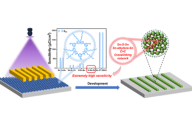The world's first ultra-wide bandgap semiconductor high-frequency filter chip production line is in the process of trial production
According to the "Shanghang Rong Media" public account, the overall architectural image of the second phase project of Fujian Jingxu Semiconductor Technology Co., Ltd. - a high-frequency filter chip production project based on gallium oxide piezoelectric film new materials has recently emerged.
According to the relevant person in charge, the civil engineering and the main body of the whole project have been completed, and the construction of the rainwater and sewage pipe network and the road surface has begun. The interior decoration has entered the fine decoration project, the construction of the power station room, and the decoration project of the Jingxu factory are expected to complete the initial trial production in September.
It is understood that the total investment of the project is 1.68 billion yuan, and the construction of an industrial plant area of 136 mu will build the world's first ultra-wide bandgap semiconductor high-frequency filter chip production line. The first batch of production lines will achieve an annual production capacity of 400kk, and the company's output value will be about 1 billion yuan. After completion, it will not only fill the gap in the field of new materials of gallium oxide piezoelectric thin films in China, but also play an important role in promoting the development of new materials industry in Shanghang County.
Fujian Jingxu Semiconductor Technology Co., Ltd. is a high-tech enterprise with independent intellectual property rights, focusing on high-frequency acoustic wave filter wafers and chip materials for 5G communications. The technical team has been researching the preparation of 5G acoustic wave filters since 2005, and has more than 100 patents for optoelectronic integrated chips and compound single crystal thin film materials. In particular, it is in an international leading position in the preparation technology of piezoelectric thin film material chips for RF filters, the core device of 5G.




